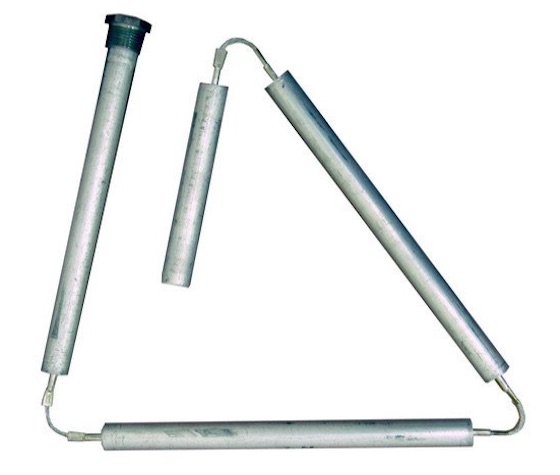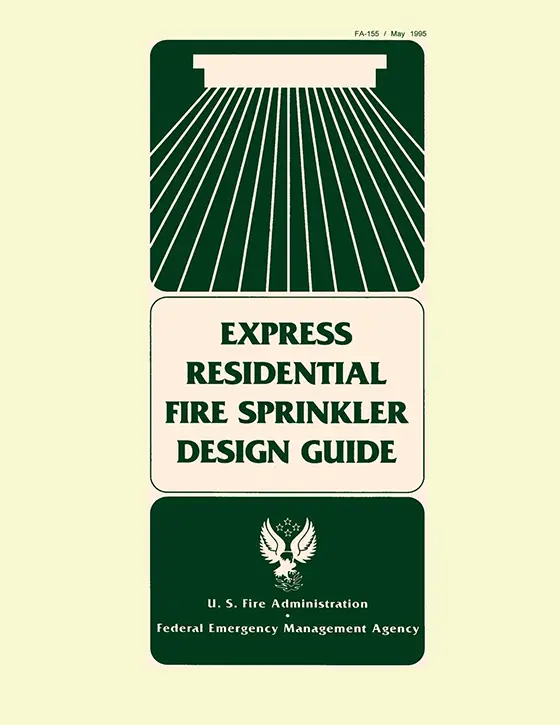Ten years ago this month, Kathy and I purchased the wooded lot where we now live. It was an incredible find. A one acre lot with all underground utilities which backed up to an undeveloped portion of a city park. The lot also contained a variety of specimen trees: American beech, pin oak, ginko, tulip, fir, and maple. One tree, a pin oak, was huge, approximately 4 feet in diameter and about 80 feet tall. The challenge was to build the house and save the trees.
Several trees had to be cut down. One was a maple tree that was in the center of the dining room. Another, a cherry tree, was in the breakfast room. Several others were dangerously close to the foundation of the house. One of them was the giant oak tree.
Calling the Arborist
Kathy has the green thumb in our family. She has always been interested in plants and trees. Fortunately, she knew that we had to obtain the advice of a professional in order to save the trees. She called Dave Stang, a certified arborist who worked for one of the largest nurseries in the area. Dave said he would come to visit our site.
It is important to note that I had not yet started to build the house. All that I had done was to clear the lot of underbrush and cut down the two previously mentioned trees. I had laid out where the house foundation lines on the ground. This would allow Dave to see exactly where the house would be in relation to the trees.
Dave showed up and quickly sized up our situation. To make a long story short, he said that all of our trees could be saved, even the huge oak tree which was only 6 feet away from the laundry room foundation! The American beech tree, Dave said, was the most susceptible to damage. Any work beneath this tree which would compact the soil or cut its roots would spell disaster.
The Outcome
We followed Dave's advice. He said that it would take a minimum of 5 - 7 years to see if all of the trees would survive. To this date, all of the trees are alive and healthy! Kathy and Dave saved the trees. Without their advice, I'm sure that my construction activities would have killed several, if not all of the trees.
Construction + Trees = Trouble
Trees that grow in a forest are usually in perfect balance with their surroundings. This is especially true of the soil in which the tree is growing. The quality of the soil and its makeup are critical to the survival of a tree. Simply said, if you alter the soil beneath a tree, you risk temporary or permanent damage to a tree.
Soil, especially topsoil, contains a tremendous amount of air. You can demonstrate this by pouring water on some soil. If it readily soaks into the soil, there is lots of air in the soil. The water is flowing into the empty air spaces around the soil particles.
Trees need the oxygen located around the feeder roots in the topsoil. They use this oxygen in the chemical reactions necessary to pick up nutrients from the soil.
Construction activities can remove this air. The most common cause is compaction of the soil. You can easily compact topsoil by rolling over it with a heavy object. Heavy objects include dump trucks, concrete trucks, bulldozers, delivery trucks, and repeated compaction by "light" weight pickup trucks and cars.
The compaction of soil causes a secondary problem for trees. Compacted soil does not readily accept rain water. There simply is no where for the water to go. Remember, water enters soil that has air. Trees deprived of moisture can become weak. They are more susceptible to disease. It can lead to death.
Digging up & around Roots
Trenching activities in and around tree roots can cause massive problems. Tree roots serve two primary purposes. They extract food and water from the ground. This is taken to the leaves and turned into energy. This energy is then stored in the roots to be used the following spring to create new leaves and seeds. It's that simple. If you cut off the roots to a tree, you remove this life line.
Some trees can take more abuse to their roots than others. For example, in my case, Dave the certified arborist, told Kathy and I that our pin oak trees could have up to 50% of its roots disturbed. However, he said that our American beech tree could only withstand minimal root disturbance. I told him that I had planned to trench a gas line right under the tree disturbing a good 40 percent of the roots. Dave said that I would have plenty of beech firewood within 3 years!
Soil Chemistry
Certain trees like certain soils. Soils have different chemistry, that is, one soil may be more acidic or alkaline than another. Construction activities can radically affect the chemistry of soil.
Concrete and brick mortar are very alkaline. Every time a concrete truck delivers concrete to a jobsite it must be cleaned before it leaves the jobsite. The chute is cleaned as well as every other object that got concrete splashed on it. Bricklayers clean out their mortar mixers at the end of each day. If this washout water from either the concrete or mortar soaks into soil around a tree, it can kill the tree.
Fuel oil spills from bulldozers or other heavy equipment can affect the soil as well. Often, scrap materials from a job are buried on site. Drywall scrap is very alkaline. Paints and thinners can change soil chemistry. These things simply poison the soil.
Protective Measures
You might be surprised as to how much a mature tree is worth. Next time you talk with your house insurance agent ask him or her. Depending upon its species and age, an insurance company might pay you thousands of dollars if you loose a tree on your lot . Furthermore, you simply can't replace large trees. It pays to protect trees on a construction site. They add value and beauty to any building site.
Historically, only the trunks of trees were protected during construction. Heavy equipment might scar a trunk. Now we know that it is far more important to protect the root zone which lies underneath the drip line of the branches. There are many ways to do this.
All too many people simply install small flags or caution tape stapled to wooden stakes. Construction workers scoff at these flimsy barricades. You might consider the bright orange vinyl construction fencing for starters. If you really want to get serious, lightweight chain link fencing will offer the highest form of protection. Attach signs to the fencing indicating that the root zone is off limits.
The problem that you face is serious. Unless you communicate clearly and effectively that you want the trees protected, construction workers will simply drive beneath them. They will unload materials there, work in the shade of the tree, or do just about anything. If you want to save your trees you must become aggressive.
Penalties
The smart homeowners negotiate penalties in their construction contracts. These penalties are assessed to the builder or sub who violates a fenced in area. Your certified arborist can help you establish realistic penalties depending upon the tree which is being protected.
It is important to post signs on the construction fencing to notify all visitors to the sight of what will happen should they cross the fence. One concrete truck crossing the soil one time could possibly kill a tree.
The Certified Arborist
Let's see, what does a small ten foot high specimen red oak tree cost installed? Maybe $800 -1,000. It could take 25 -35 years for the tree to mature.
Knowing this, do you think a $1,000 consultation fee would be worth it to save a tree or numerous trees on your new home lot? I thought so. Who knows, maybe the consultation fee will be half that or less.
The point is this: you are talking pennies on the dollar. Hire a certified arborist before your builder shows up. He will develop a plan to help you save your trees. You will never regret spending this money.
Tree Associations
- American Forests (AF)
P.O. Box 2000
Washington, D.C. 20013
202-667-3300 - International Society of Arboriculture (ISA)
P.O. Box GG
Savoy, Illinois 61874-9902
217-355-9411 - National Arbor Day Foundation (NADF)
100 Arbor Avenue
Nebraska City, Nebraska 68410
402-474-5655 - National Association of Homebuilders (NAHB)
1201 15th Street NW
Washington, D.C. 20005
800-223-2665 - Scenic America (SA)
21 Dupont Circle NW
Washington, D.C. 20086
202-888-4300 - World Forestry Center (WFC)
4033 SW Canyon Road
Portland, Oregon 97221
503-228-1867
Publications concerning Trees and Construction
The following publications are available from the associations listed above. The initials following each publication should match the initials behind one of the associations listed above. Simply contact this association for costs (if any), availability, and ordering information.
A Reader for Global ReLeaf Natural Resource Experts AF
"Construction Damage to Trees", Journal of Arboriculture, Compendium Volume 1 ISA
Municipal Tree Ordinance Manual ISA
Building with Trees NADF
How to Save Trees During Construction Tree, City USA Bulletin #7 NADF
A Systematic Approach to Building with Trees #20 NADF
Trees and Parking Lots #24 NADF
Trenching and Tunneling near Trees NADF
How to Save Trees Resource Guide NAHB
Tree Conservation Ordinances SA
A Technical Guide to Urban and Community Forestry WFC
Videos concerning Trees and Construction
The following publications are available from the associations listed above. The initials following each publication should match the initials behind one of the associations listed above. Simply contact this association for costs (if any), availability, and ordering information.
Effects of Construction Damage to Trees in Wooded Areas ISA
Avoidance of Construction Damage to Trees on Wooded Lots ISA
Evaluating Trees for Hazard ISA
Trees are Treasure, Sustaining the Community Forest SA
The associations, publications, and videos listed on this page were compiled from an article that appeared in the January 1994 issue of Tree Care Industry. The article was titled Trees and Construction authored by Scott Cullen.
Column B93

